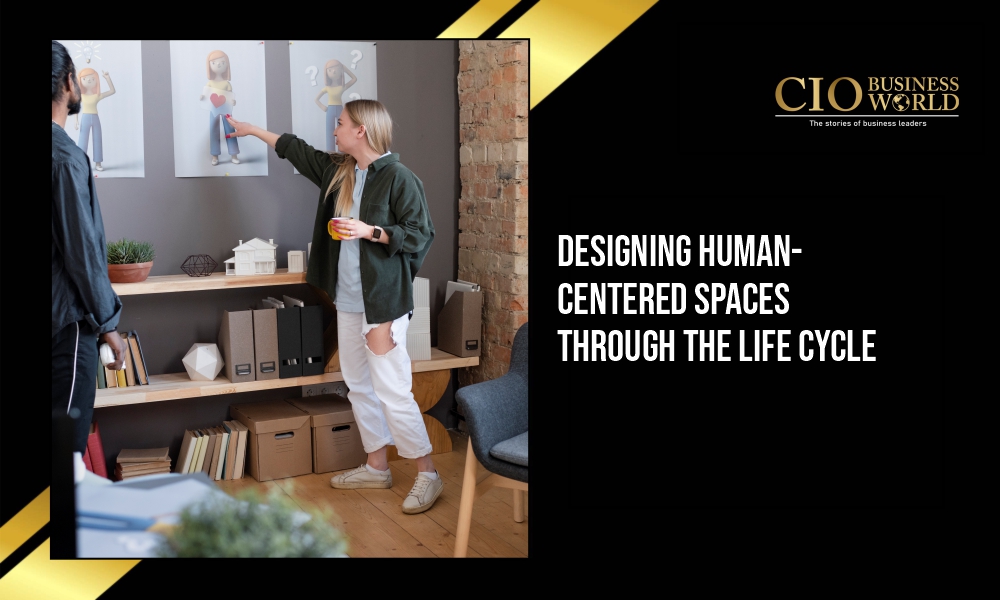Architecture is no longer just about walls, roofs, and facades. It is about the lived experience, the subtle ways spaces influence mood, cognition, and well-being. At the forefront of this human-centered design revolution are women in neuroarchitecture visionaries who fuse neuroscience, sustainability, and design to create spaces that respond to the full life cycle of human experience.
Human-Centered Design Meets Neuroscience
Neuroarchitecture studies how the brain perceives, processes, and reacts to the built environment. Women in this field are translating these insights into actionable design principles. They understand that light, color, texture, and acoustics are not merely aesthetic elements, they are stimuli that shape attention, reduce stress, enhance learning, and promote creativity.
In healthcare, female-led teams are designing hospitals that actively support healing. Patient rooms incorporate natural light, calming colors, and biophilic elements, reducing anxiety and improving recovery outcomes. In workplaces, offices are being reimagined to balance collaboration and focus, with open spaces that encourage communication alongside quiet zones that support concentration. These designs reflect a deep understanding of human psychology and the life-cycle of experience from daily routines to long-term well-being.
Life-Cycle Thinking in Design
Life-cycle design goes beyond the immediate function of a building. It considers the environmental, economic, and social impact throughout the structure’s existence from conception and construction to occupancy and eventual reuse or deconstruction. Women in neuroarchitecture are integrating this philosophy, ensuring that human-centered design does not come at the expense of the planet.
Materials are carefully selected for durability, environmental footprint, and sensory impact. Adaptive reuse and modular construction reduce waste while allowing spaces to evolve with changing human needs. Sustainable systems, such as energy-efficient lighting, water recycling, and green roofs, are designed not as add-ons but as integral components of the human experience. In doing so, these architects create spaces that nurture both people and the environment, across the full life cycle of the building.
Education and Community Spaces Reimagined
Schools, universities, and public spaces are prime examples of how women-led neuroarchitecture can transform daily life. Classrooms designed with circadian-friendly lighting, tactile surfaces, and flexible layouts enhance cognitive development, engagement, and social interaction. Parks and community centers incorporate biophilic design, creating restorative environments that reduce stress and promote mental well-being. These spaces demonstrate how human-centered design can positively influence behavior, learning, and community cohesion over the life cycle of use.
Women as Pioneers of Change
Women in neuroarchitecture are challenging traditional paradigms of design. They advocate for spaces that prioritize human experience, integrating research on cognition, emotion, and social behavior into every decision. Their work also addresses systemic issues of gender inclusivity, accessibility, and environmental stewardship ensuring that spaces are equitable and responsive to diverse communities.
By combining scientific research with creativity and empathy, women architects are shaping a discipline that is both evidence-based and artful. They lead interdisciplinary teams, collaborate with neuroscientists, sustainability experts, and policymakers, and mentor the next generation of designers. Their leadership ensures that human-centered, sustainable, and neuro-informed design is not a niche practice but the standard for future architecture.
The Impact of Human-Centered, Life-Cycle Design
The result of this approach is profound. Buildings no longer merely house people they support and enhance life. Offices boost productivity and well-being, schools foster creativity and resilience, hospitals accelerate recovery, and public spaces nourish social connection and mental health. Sustainability ensures that these benefits are not fleeting but endure across the building’s life cycle, supporting future generations as well as current occupants.
Through their work, women in neuroarchitecture are demonstrating that architecture can be a transformative force. Human-centered spaces, designed with life-cycle thinking, reflect a holistic understanding of the relationship between people, place, and the planet. These spaces honor the rhythms of human life while embracing ecological responsibility, proving that thoughtful design can enrich both mind and environment.
Conclusion
Designing human-centered spaces through the life cycle is more than a design philosophy, it is a movement, and women are leading the charge. By combining neuroscience, sustainability, and creativity, they are redefining the possibilities of architecture. Their work ensures that every space from a hospital room to a city park is attuned to human needs, adaptable to change, and respectful of the planet. In doing so, they are shaping a future where architecture is not just built but lived, supporting well-being and sustainability at every stage of life.









